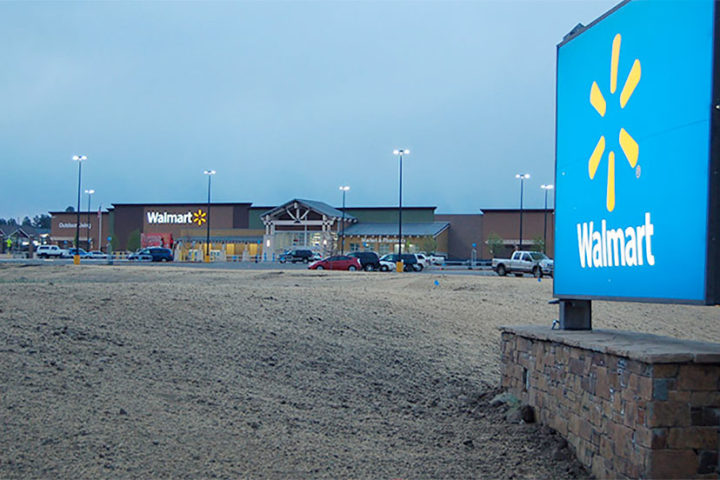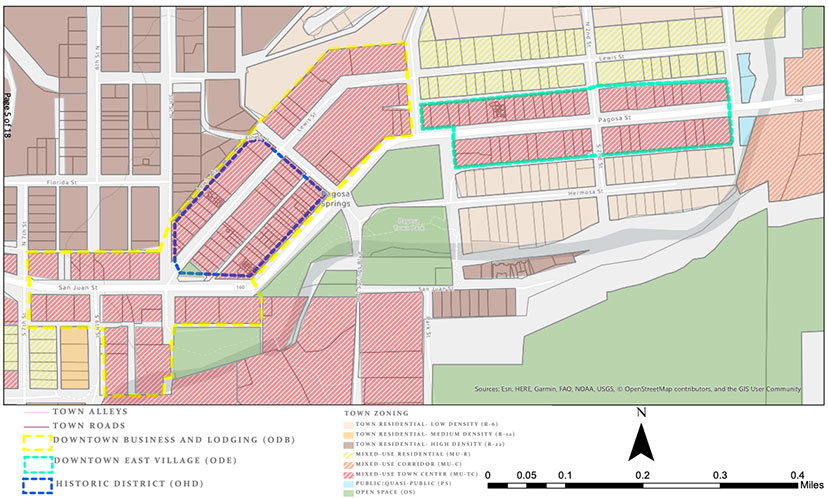Last night, at their regular meeting, the Pagosa Springs Town Council passed two new ordinances.
Ordinance 958, which will significantly limit the number of STR (Short-Term Rental) permits within the municipality’s residential districts, passed unanimously on second reading and became effective immediately upon passage. The limits do not apply to existing vacation rentals, nor to vacation rentals when the property owner lives full-time on the same property.
The Council included a 250-foot radius ‘buffer’ between allowed vacation rentals.
Permit applications already been paid as of September 7, but which have not yet been fully processed by the Town government, will be granted the necessary permit.
You can download the ordinance here.
I will offer a more complete explanation of the new STR ordinance in a future editorial.
The other ordinance — Ordinance 957 — amends the Land Use and Development Code (LUDC) to significantly reduce the number of on-site parking spaces requires when a commercial building is constructed or expanded, within the core downtown area. The ordinance passed on a 5-to-1 vote.
The new LUDC language reads a follows:
Parking within the ODB and ODE Districts:
Parking within the ODB and ODE districts shall be provided on-site for all new developments, building expansions and redevelopments along the alley frontage at a minimum of 1 space per 10 lineal feet of alley frontage. Off- Street parking requirements contained in table 6.9-1 shall otherwise be waived with the exception that all residential and lodging uses shall provide parking as required in Section 6.9. New curb cuts accessed from Pagosa Street and San Juan Street shall be prohibited unless an alley is not available for access.
Here, again, is the map showing the affected areas. The ODB (Downtown Business Overlay) district is outlined with the dotted yellow line, and fully encompasses the Historical District. The ODE (Downtown Easy Village Overlay) district is outlined with the dotted green line.
The red hatched areas are zoned ‘Mixed Use Town Center’. The green areas indicate Town parks. The brown areas are zoned for ‘higher density’ residential uses; the yellow areas ‘mixed use’ residential; the beige color indicates ‘low density’ residential.
Much of the parking discussion on Tuesday evening focused on the question of ‘in-lieu’ fees — fees charged to new construction projects that would be earmarked for the future development of public parking. Such fees were not included in the ordinance, however, and no clear consensus was evident among the Council members regarding ‘in-lieu’ fees.
Council member Nicole Pitcher noted her concerns about fees collected by the Town that are not directly related to a specific project. She mentioned the Town’s decade-long experiment with ‘impact fees’, which the Council repealed a couple of years ago, after concluding that the fees were discouraging development within the Town limits.
Ms. Pitcher:
“When I think about the ‘in-lieu’ fees, and I think about the [now-repealed] impact fees — you know, one of the things that was really hard was to create a really sound [nexus] — you know, your project is going to cause this impact so you are going to pay this fee. It was always very convoluted, and I never felt really comfortable about charging that fee, because it felt messy.
“It’s like, ‘Well, we’re just coming up with this dollar figure, and you have to pay this, but we’re not really sure what this is going to cover…’
“So that’s my concern about the in-lieu fees. That they would be sort of arbitrary. But I’m very much in favor of moving towards centralized parking, and getting away from parking requirements.”
She also noted that “we’ve been talking about [reducing the parking requirements] for at least a year, and when it really hit home to me was when the Alley House wanted to expand, and in order to do that under our parking requirements, they had to create a parking lot on a prime piece of downtown real estate, in order to comply.
“And my consideration was… for a vibrant downtown. If you just have these huge swaths of nothing… that really diminishes walkability. People want to walk through districts that are interesting and vibrant. And when every other parcel is a parking lot, that kills the vibrancy in the downtown area.
“I’ve been wanting to moved towards centralized parking for a long time. I think that’s super important…”
Yesterday, in Part Two, I shared an image I’d found online.
As a member of the non-profit Pagosa Housing Partners board, I’ve been helping to develop ideas and plans for future workforce housing within the downtown area. (Or even in the uptown area, for that matter.) It’s a fairly well-accepted concept, among folks concerned with affordable housing, that our downtowns can become more interesting and vibrant — and our housing will be more affordable to build — if we concentrate on areas where infrastructure and utilities and transportation options already exists.
We already have acres — literally, acres — of paved parking lots in Pagosa Springs. And thanks to the parking requirements enforced by the Town and County governments, those parking lots are sized for ‘peak events.’
The Walmart parking lot, for example. It’s apparently sized to accommodate the crowd at 7pm on Christmas Eve, because on a normal weekend, at any time of day, the lot is less than half full.

How many other parking lots are tremendously over-sized and under-utilized, thanks to our government regulations? I guess I am thinking of the acres church parking lots that sit almost entirely vacant six days of the week.
Or, say, the main parking lot at Pagosa Springs Medical Center, which sat mostly empty during the greatest medical crisis of the past 100 years.
Are these parking lots suitable as places to create some housing options, like the ‘parking lot apartment building’ shown in the image above?
Because we desperately need available housing, if we want our community to continue functioning.



